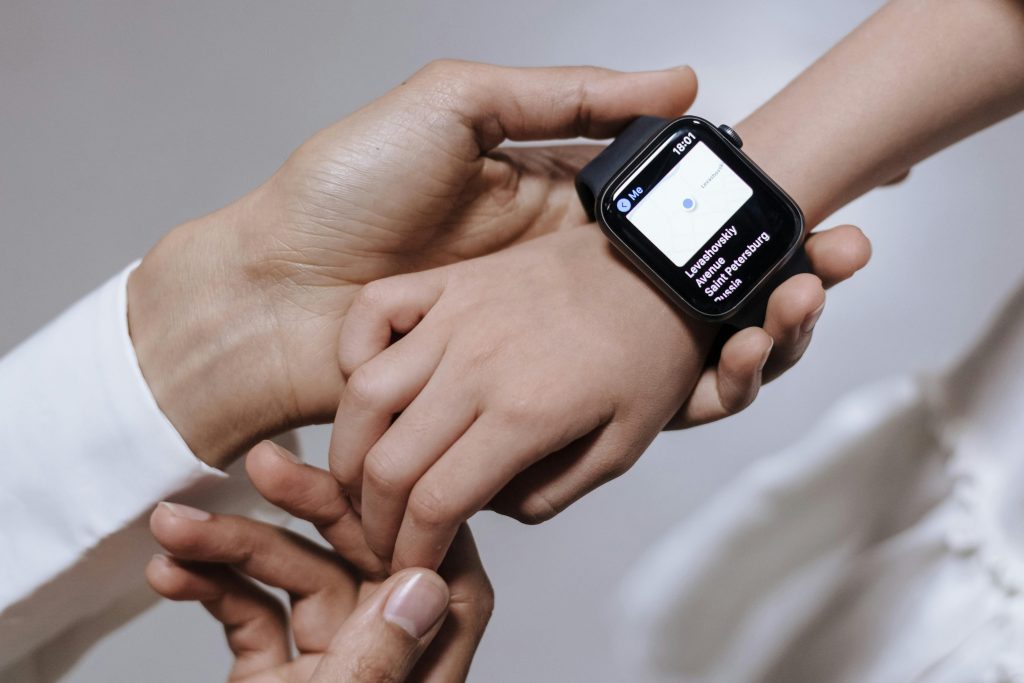Wearable technology has become an integral part of the health and wellness landscape. These devices have moved far beyond simple step counters and fitness trackers. They now offer a sophisticated array of sensors, data analytics, and real-time monitoring capabilities that empower individuals to take control of their health in unprecedented ways. From smartwatches to biometric patches, wearable technology is transforming the way we monitor and manage health and wellness.
This post will explore the benefits, challenges, and future potential of wearable technology in healthcare, highlighting how these innovations are improving quality of life and reshaping the relationship between individuals and their health data.
The Evolution of Wearable Technology
Wearable technology has evolved rapidly over the past decade. What began as simple pedometers designed to count steps has now grown into an industry of complex devices capable of tracking heart rate, sleep patterns, stress levels, blood oxygen levels, and even more granular health metrics.
Early wearables, like Fitbit and Jawbone, gained popularity due to their ability to monitor physical activity, providing users with a clear picture of their daily movement. These devices focused on fitness enthusiasts, allowing them to set goals, track calories burned, and compare performance over time.
However, as the technology matured, companies like Apple, Garmin, and WHOOP introduced wearables that went beyond fitness. The Apple Watch, for example, not only tracks steps but also includes an electrocardiogram (ECG) sensor, blood oxygen sensor, and fall detection. The addition of these advanced features marks a turning point in the wearable tech space, shifting the focus from fitness tracking to a more comprehensive health monitoring system.
Wearable devices are no longer just for athletes or those looking to stay in shape. They are becoming vital tools for managing chronic conditions, improving overall wellness, and even detecting potential health issues before they become serious.
Key Health Metrics Tracked by Wearable Technology
Wearable devices are designed to track various health and wellness metrics, often in real-time. This data offers users deeper insights into their bodies, allowing them to make more informed decisions about their health. Some of the key metrics that wearable technology can track include:
1. Heart Rate and Heart Health
Most wearable devices come equipped with heart rate sensors. These sensors use photoplethysmography (PPG) to detect the flow of blood through the skin and measure the user’s heart rate. Some wearables can monitor heart rate continuously throughout the day, while others offer heart rate monitoring during specific activities like workouts or periods of rest.
More advanced wearables, such as the Apple Watch, include ECG functionality, allowing users to detect irregular heart rhythms like atrial fibrillation (AFib). These capabilities are crucial for individuals at risk of cardiovascular issues, as early detection can lead to prompt medical intervention.
2. Sleep Patterns
Many wearables include sleep tracking features that monitor the quality and quantity of sleep. Using accelerometers and other sensors, these devices can determine when a user falls asleep, how long they stay asleep, and how much time is spent in different sleep stages, including REM and deep sleep.
Poor sleep is linked to a variety of health issues, such as obesity, heart disease, and depression. By tracking sleep patterns, wearables can help users make lifestyle adjustments to improve their sleep hygiene and, ultimately, their overall health.
3. Physical Activity and Fitness
One of the foundational features of wearable technology is the ability to track physical activity. Wearables count steps, monitor exercise intensity, and measure calories burned throughout the day. Advanced devices can also track specific types of workouts, such as running, swimming, cycling, and weightlifting, providing users with tailored metrics for each activity.
These features encourage users to stay active, set fitness goals, and engage in regular exercise, which are critical factors in maintaining overall health and wellness.
4. Blood Oxygen Levels (SpO2)
Blood oxygen saturation (SpO2) is an important metric for determining how efficiently oxygen is being delivered to the body’s cells. This is especially useful for individuals with respiratory conditions such as asthma, chronic obstructive pulmonary disease (COPD), or sleep apnea.
Devices like the Apple Watch and Garmin’s smartwatches include SpO2 sensors that monitor blood oxygen levels, particularly during sleep or high-altitude activities. This feature has gained attention during the COVID-19 pandemic, as it allows users to track blood oxygen levels, which can help identify early symptoms of respiratory issues.
5. Stress and Mental Health
Stress management is another area where wearables have made significant strides. Some devices, like Fitbit and Garmin smartwatches, include stress tracking features based on heart rate variability (HRV), a metric that reflects the balance between the sympathetic and parasympathetic nervous systems. When HRV is low, it indicates higher stress levels, while higher HRV indicates lower stress.
Additionally, some wearables offer guided breathing exercises or mindfulness reminders to help users manage stress in real-time. With the growing awareness of mental health, these features are becoming increasingly important for maintaining a balanced lifestyle.
6. Glucose Monitoring
For individuals with diabetes, continuous glucose monitoring (CGM) is a game-changer. While most CGMs are still separate from mainstream wearables, there is ongoing work to integrate this technology into devices like smartwatches. Abbott’s FreeStyle Libre and Dexcom’s G6 are examples of popular CGM devices that are paving the way for non-invasive glucose tracking in wearables.
This innovation is particularly beneficial for people with diabetes, as it allows them to monitor their blood sugar levels in real-time without the need for frequent finger pricks. It also enables individuals to see how different foods and activities affect their glucose levels, leading to better management of the condition.
Benefits of Wearable Technology for Health and Wellness
The impact of wearable technology on health and wellness is significant. Some of the key benefits include:
1. Increased Awareness and Accountability
One of the primary advantages of wearable technology is the increased awareness it provides. By tracking health metrics in real-time, wearables give users a clear understanding of their physical condition. Whether it’s reminding someone to take more steps or alerting them to potential heart irregularities, wearables encourage individuals to take proactive steps to improve their health.
2. Personalized Health Insights
Wearable devices gather vast amounts of data that can be used to generate personalized health insights. For instance, if a user consistently sleeps poorly, their wearable may suggest adjusting bedtime routines or identifying potential disruptions. Similarly, if an individual’s heart rate is consistently elevated, the device might recommend stress-relieving activities or a visit to a healthcare provider.
This level of personalization empowers users to take control of their health, tailoring their lifestyle and habits to what works best for their bodies.
3. Early Detection of Health Issues
Wearable technology plays a critical role in the early detection of health issues. Continuous monitoring allows users to spot abnormal trends in their data that may indicate potential problems. For example, a user may notice that their heart rate remains elevated during rest or that their blood oxygen levels are consistently low. Such indicators can prompt individuals to seek medical advice before the condition worsens.
In some cases, wearables have even been credited with saving lives. Stories of people discovering they had atrial fibrillation or sleep apnea through their wearable devices are becoming more common, underscoring the life-saving potential of these technologies.
4. Chronic Disease Management
For people with chronic conditions, wearable technology offers an effective way to manage their health. Devices that track blood pressure, glucose levels, and heart rate variability help individuals stay on top of their conditions. Wearables provide real-time feedback, allowing users to make adjustments to medication, diet, or physical activity based on the data they receive.
Remote monitoring capabilities also enable healthcare providers to track patients’ health metrics from a distance, allowing for timely interventions and adjustments to treatment plans. This continuous monitoring reduces the need for frequent in-person visits, improving convenience for both patients and healthcare providers.
Challenges and Considerations
While wearable technology offers many benefits, there are also challenges that need to be addressed.
1. Accuracy of Data
One of the main concerns with wearable devices is the accuracy of the data they provide. While most wearables are highly accurate for general tracking, they may not always be precise when it comes to medical-grade monitoring. For instance, wrist-based heart rate monitors can sometimes be less accurate during high-intensity workouts or when the wearable is not properly fitted.
To address this, manufacturers are continually improving the accuracy of their sensors and algorithms, but it’s important for users to understand that wearables should complement, not replace, professional medical advice.
2. Data Privacy and Security
As wearable devices collect vast amounts of sensitive health data, privacy and security concerns are paramount. Users need to ensure that their data is stored securely and not shared with third parties without their consent. The growing trend of companies using health data for targeted advertising or other purposes raises ethical questions.
Wearable manufacturers are working to implement stronger encryption and security protocols, but users should always be aware of the privacy policies of the devices they use.
3. Cost and Accessibility
While wearable technology is becoming more affordable, high-end devices with advanced health monitoring features can still be costly. This creates a potential barrier to access for individuals from lower socioeconomic backgrounds who may benefit most from these technologies. Additionally, integrating wearables with healthcare systems to provide meaningful care insights often requires specialized infrastructure that not all healthcare providers have access to.
The Future of Wearable Technology in Health and Wellness
The future of wearable technology is bright, with continued advancements on the horizon. Some of the most exciting developments include:
- Non-invasive glucose monitoring: Researchers are working on integrating continuous glucose monitoring into mainstream wearables, which would be a breakthrough for diabetes management.
- Wearables for mental health: Future devices may include more advanced tools for monitoring mental health, detecting early signs of depression, anxiety, and other psychological conditions.
- AI and predictive analytics: As wearables collect more data, AI-powered algorithms will provide even more accurate predictions and personalized health recommendations.
In conclusion, wearable technology is revolutionizing the way we monitor our health and wellness. By providing real-time data and personalized insights, wearables empower individuals to take control of their health, detect issues early, and make informed lifestyle changes. As technology continues to advance, the potential for wearables to improve quality of life and transform healthcare is immense.




